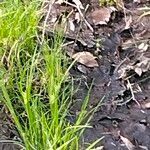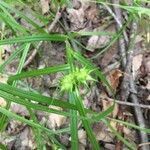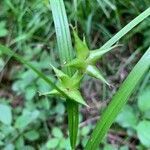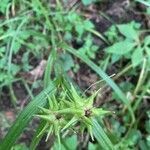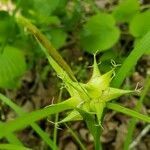Much like no. 225 [Carex grayi J. Carey]; pistillate spikes 1–4, 1–2.7 cm long and wide, ovoid to obovoid, loosely fld, on peduncles to 1.5 cm, often closely aggregated; perigynia 1–12, mostly spreading or ascending, with a satiny lustre, 10–16.5 × 2.5–6.5 mm, convexly rounded to the base, the poorly defined beak 2–4.2 mm; achene 3.5–5.7 × 2.5–4 mm, with flat or convex faces; 2n=48. Moist or wet woods; Nf. to se. Man., s. to Fla. and Tex.
